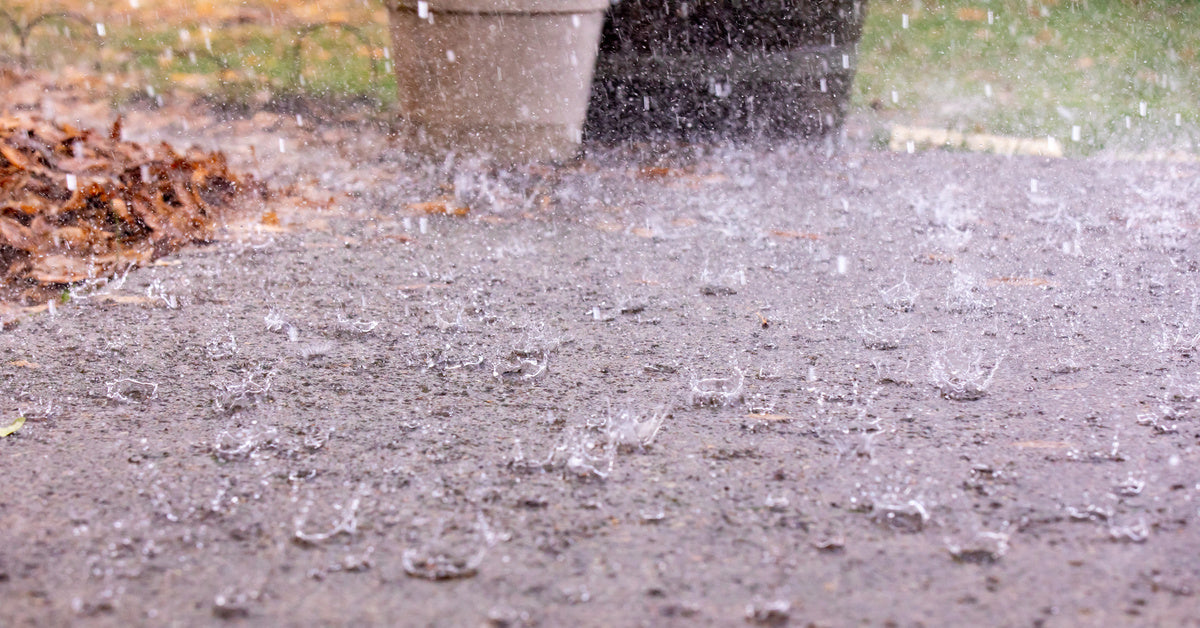A clean and well-maintained patio enhances the appearance of your outdoor space and adds value to your property. However, over time, patios become susceptible to mold, mildew, algae, and black spots, especially when exposed to moisture, shade, and organic debris. These contaminants diminish the visual appeal of your patio and make the surface slippery and hazardous, while degrading materials like stone or concrete.
Fortunately, with the right maintenance practices and environmental adjustments, you can protect your patio from mold and black spots. By focusing on drainage, sunlight exposure, regular cleaning, and environmental control, you can maintain a cleaner and safer outdoor space without relying on sealing products.
Understanding the Problem
To effectively prevent mold and black spots, it’s important to understand how they develop in the first place. Mold and mildew thrive in damp environments. If water doesn’t drain properly from your patio or if the surface remains wet for extended periods, conditions become ideal for mold growth. Shaded areas, particularly those near trees, fences, or buildings, also trap moisture and limit airflow, which slows evaporation and fosters fungal development.
Organic debris contributes as well. Fallen leaves, pollen, soil particles, bird droppings, and other matter provide a food source for fungi and bacteria. When left on the patio surface, this debris breaks down, encourages microbial activity, and leads to dark discoloration.
Black spots from lichen and fungal colonies specifically take hold on porous stone surfaces, where spores can settle deep into the material. Natural stone patios, especially those made of limestone or sandstone, tend to absorb more moisture than non-porous surfaces like porcelain or composite materials. As a result, they require more proactive care to stay mold-free.

Improving Drainage
Controlling moisture is the first line of defense. If your patio collects standing water after rain, it’s your sign to correct drainage issues as soon as possible. The ground around the patio should slope slightly away to help water drain efficiently. When grading is insufficient, water lingers on the surface or around the edges, creating a damp environment that supports mold growth.
In some cases, installing a drainage system may become necessary. French drains, gravel-filled trenches, or perforated pipes can help divert water away from the patio area.
Clogged or misdirected downspouts often dump roof runoff directly onto patios, soaking the surface and encouraging black spots to form. Make sure downspouts channel water well away from paved areas.
Increasing Sunlight Exposure
Mold and lichen thrives in damp, dark spaces. Increasing sun exposure on your patio can greatly reduce mold and algae. If tree branches or overgrown shrubs shade your patio, trimming them back will allow more sunlight to reach the surface. This promotes faster drying after rain and prevents the buildup of mold-supporting moisture.
You should also pay attention to the way patio furniture and potted plants affect light distribution. Large, heavy furniture left in one spot for long periods can create damp, shaded areas underneath. By rotating furniture and periodically moving planters, you can avoid creating conditions where mold flourishes.
When constructing new patio features such as pergolas, choose designs that allow some light to pass through. While they are attractive for your landscaping, fully shaded structures often encourage mold formation if they trap moisture underneath.
Establishing a Cleaning Routine
Regular cleaning also prevents mold and black spots. A consistent routine prevents the buildup of organic debris and dirt that serve as food sources for mold spores. Begin by sweeping the patio regularly using a stiff broom. This removes leaves, dust, and other materials before they can decompose and cause stains.
Follow up by rinsing the surface with water to clear away finer particles and residue. During the fall or after storms, debris tends to accumulate quickly, so clean more often and quickly after these conditions.
For deeper cleaning, use a non-toxic, biodegradable patio cleaner designed to break down organic matter without damaging plants, pets, or surrounding landscaping. Products like Patio Black Spot Remover help lift grime and reduce the chance of mold taking root. Apply them with a soft-bristled brush or spraying head to reach into textured surfaces and stone.
Using Power Washing Strategically
Power washing remains one of the most effective methods for removing embedded mold and black spots, but you must do so carefully to avoid damaging patio surfaces. Use a washer set to moderate pressure, depending on the material. Higher pressure may damage softer stones like limestone, so always start with the lowest effective setting.
Use a fan-style nozzle to spread the spray evenly and avoid concentrating force on one area. Annual or semi-annual washing with black spot removal and prevention products refreshes the appearance of the patio and helps eliminate the underlying cause of many surface stains.
Applying Mold-Inhibiting Treatments
After cleaning, you can apply a mold-inhibiting treatment to help prevent future growth. These products work by disrupting mold spores and algae before they can colonize. Look for eco-friendly formulations like Patio Black Spot Preventer designed for use on patios and outdoor stone surfaces.
Use a garden sprayer to apply the solution evenly over the cleaned surface. Reapply these treatments before the wet seasons—typically in early spring and late fall—when conditions favor mold development.
Managing Organic Debris
Organic debris is one of the most overlooked contributors to mold and black spot issues. To keep it under control, focus on reducing how much material ends up on the patio surface. Clear leaves and dirt promptly and keep nearby gutters fitted with guards to reduce the amount of leaf litter that gets washed onto the patio.
Use entry mats near patio doors to reduce the amount of dirt and organic matter that gets tracked onto the surface. If your patio is near trees or flower beds, consider creating a small buffer zone of gravel or mulch to reduce debris transfer.

Managing Surrounding Vegetation
Plants and landscaping features near the patio often contribute indirectly to mold problems. Overgrown shrubs block sunlight and reduce airflow, while dense vegetation creates cooler, damp environments. Keep surrounding plants pruned back and avoid placing moisture-loving plants directly against the patio’s edge.
Protecting your patio from mold and black spots requires a thoughtful approach to moisture control, airflow, sun exposure, and routine care. By improving drainage, increasing sunlight, and minimizing organic debris, you can prevent fungal growth and preserve the natural beauty of your outdoor space.
With regular attention and practical adjustments, you can enjoy a clean, safe, and attractive patio year-round. Accomplish this feat more efficiently with patio black spot preventers from Patio Black Spot Removal Inc. Browse our range of cleaning and prevention products to keep your patio looking pristine.



